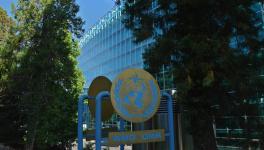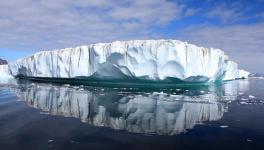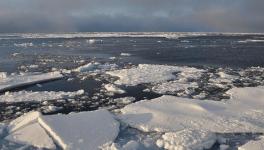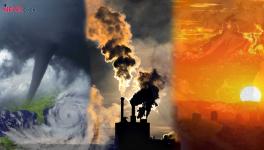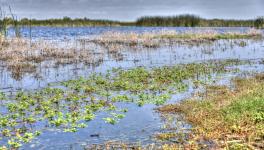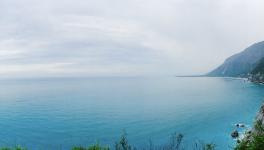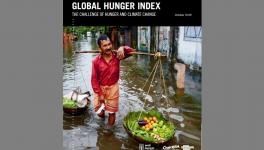World Meteorological Organisation Calls for Urgent Action Over Depleting Cryosphere
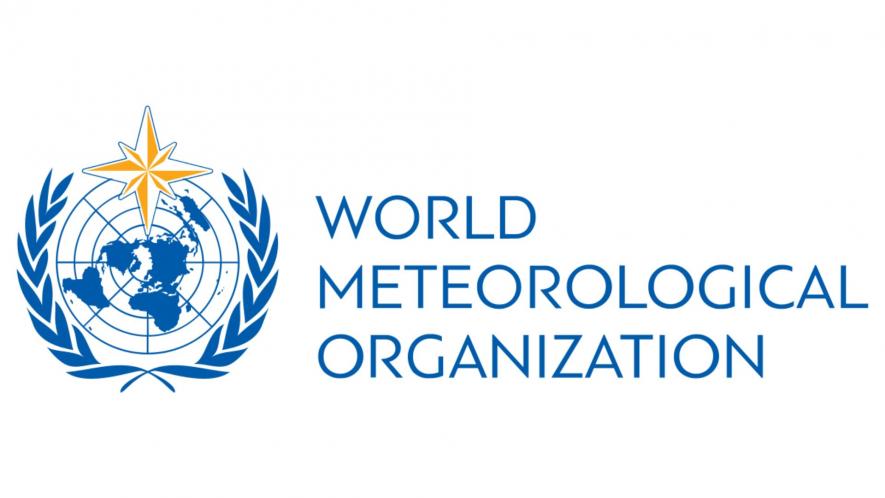
Image Courtesy: Wikipedia Commons
New Delhi: The World Meteorological Organisation (WMO) announced on May 30 that it has made Earth’s cryosphere its top priority. The World Meteorological Congress, the top decision-making body of WMO, had resolved for more coordinated observations and predictions, research, data exchange and services, according to a WMO release.
Making the cryosphere a top priority and urgent action is based on the increasing impacts of depleting sea ice and ice sheets, fast melting of glaciers, permafrost and snow, all accounting for a dangerous rate of sea level rise. This is escalating the risks over the developing island nations and impacting ecosystems and economies worldwide. Water and water security hazards are also rising due to cryosphere depletion.
WHY DOES THE CRYOSPHERE MATTER?
The cryosphere is the total iced portion of Earth, be it glaciers and ice sheets in Greenland and Antarctica or glaciers or permafrost. The cryosphere is vital in the Earth's climate system, significantly influencing the world’s climate and providing water for man, animals, and plants worldwide.
The primary role of the cryosphere in the global climate system is known as ‘Albedo’. The albedo is the process through which solar rays are reflected back to space from the shiny white surfaces of the cryosphere. This pertains to the ice surface's high reflectivity and cooling effect on the planet. Coupled with albedo, the insulating effects of snow cover and the latent heat (heat energy absorbed or released by a substance when it changes its state) associated with the change of state between ice and water are significant links of the cryosphere with Earth’s climate.
Oceans, landscapes and the atmosphere of Earth are intricately linked to the cryosphere so that precipitation, water circulation, and waterways are affected by it. Seasonal snowfall, glaciers etc., play a crucial role in storing freshwater. Himalayan ranges like the Hind Kush and mountain ranges surrounding the Tibetan plateau contain the world’s largest reservoir of glaciers and snow outside the poles. With the ice melting each spring, the rivers bulge, providing fresh water to billions of people downstream.
Permafrost, one major component of the cryosphere, is a storehouse of greenhouse gases. Arctic permafrost stores twice the carbon in the atmosphere today, amounting to about 1400-1600 billion tons of carbon. Permafrost is the land that remains frozen for at least two years.
GLOBAL WARMING-INDUCED CRYOSPHERE DEPLETION
The cryosphere is sensitive to the changing climate, especially global warming, due to greenhouse gases. The cryosphere is depleting, which can be observed in ice sheets, glaciers, permafrost grounds, reduction in snow cover, and ice content in the sea.
In its State of global climate report 2022, the WMO highlighted the rapid changes in the cryosphere in terms of changes in sea level rise, ice and glacier depletion. It suggests that the cumulative thickness of glaciers has plummeted by 30 meters since 1970. Also, the average thickness of the glaciers has depleted by 1.3 meters between October 2021 and October 2022, which is a much higher loss than the previous decade.
Similarly, Antarctic sea ice plummeted to the lowest level ever recorded and is 1 million kilometer2 below the long-term mean (from 1991 to 2020). The Arctic ice sea has also recorded the lowest monthly ice extent in satellite records.
On the other hand, as per satellite data, WMO says, sea level rise has touched a new record high in 1993-2022. The mean sea level rise doubled from the decade 1993-2002 (2.27 millimetres per year) to the last one, 2013-2022 (4.62 millimetres per year). Glaciers, Greenland and Antarctica ice sheet melting accounts for about 50% of the global sea level rise.
WMO terms the permafrost as the sleeping giant of greenhouse gases. The melting of Arctic permafrost (which stores double the carbon as in the atmosphere) increases the risk of releasing the gases and hence causing cascades of natural hazards. The melting of the permafrost, in the range of 1.5-degree Celsius temperature rise (as per the Paris Agreement), is estimated to cause carbon dioxide emission of 150-200 gigatonnes. Again at the 2 degree Celsius temperature rise range, the estimated carbon dioxide emission is around 220-300 gigatonnes, according to WMO. This much emission due to permafrost melting accounts for the total emission of the entire European Union.
“The cryosphere issue is a hot topic not just for the Arctic and the Antarctic, but it is a global issue,” commented WMO Secretary-General Petteri Taalas in a statement. The irreversible cryosphere changes will affect billions of populations.
Owing to these situations, the WMO has made the cryosphere its top priority, calling for more significant global investment and increased coordination in research and data exchange. It plans to increase funding from the regular budget and extra-budgetary funding.
Get the latest reports & analysis with people's perspective on Protests, movements & deep analytical videos, discussions of the current affairs in your Telegram app. Subscribe to NewsClick's Telegram channel & get Real-Time updates on stories, as they get published on our website.









